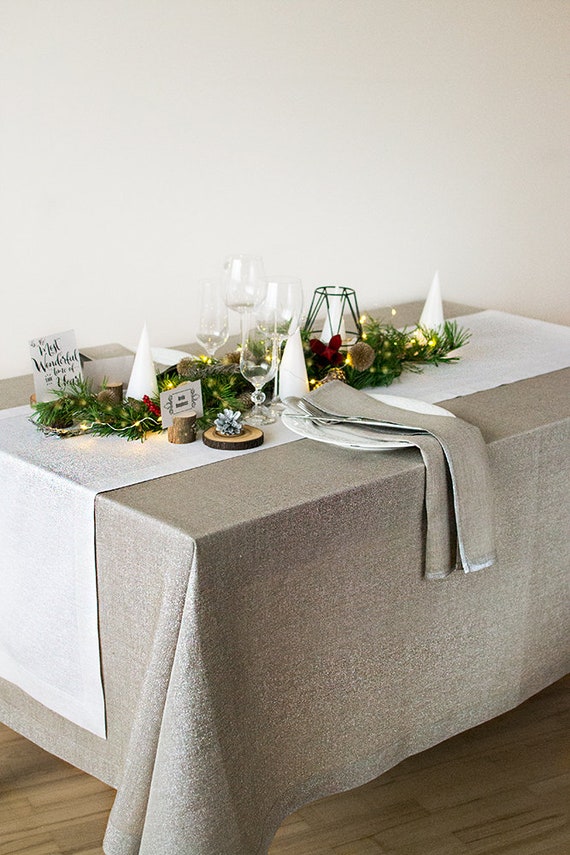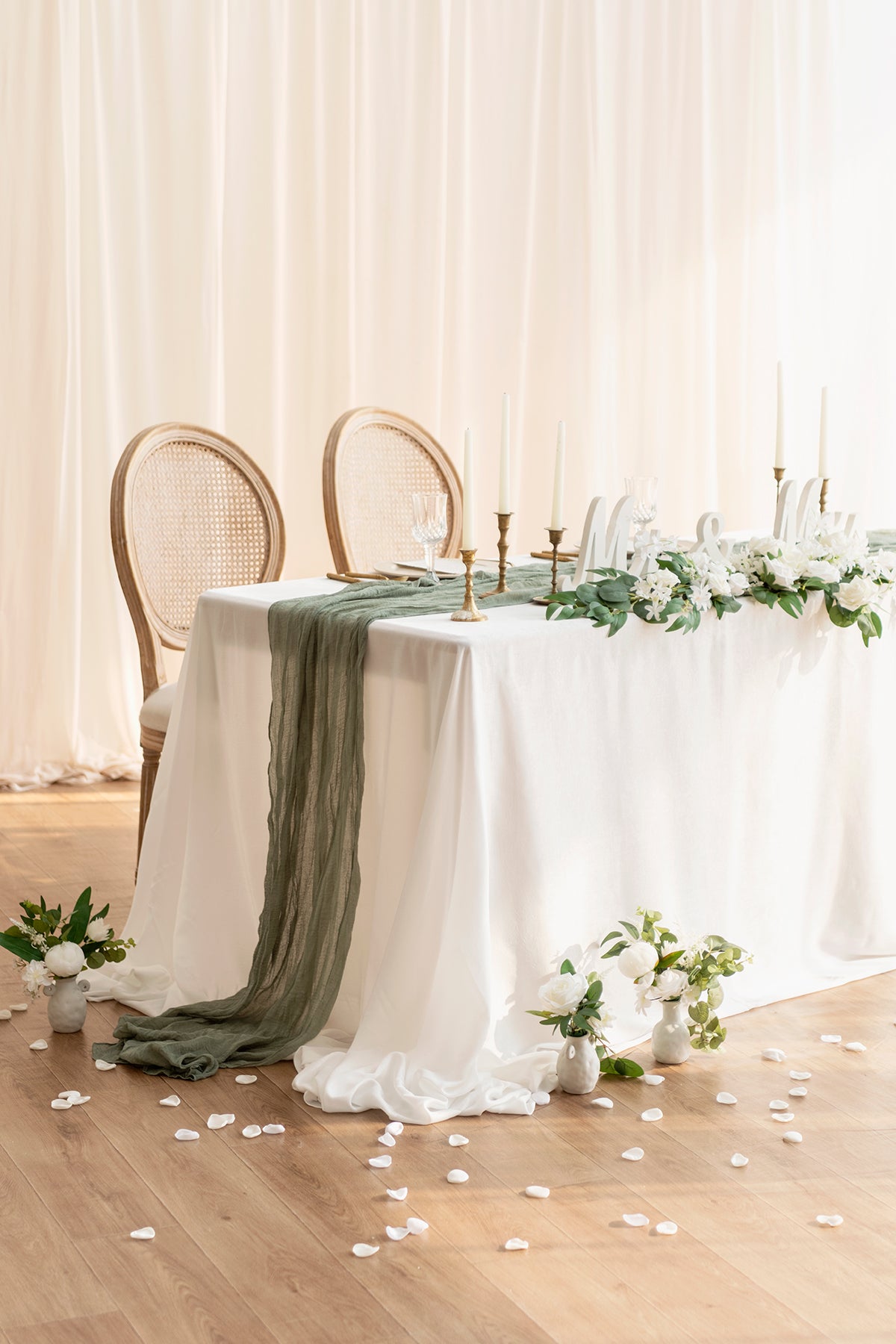Innovative Table Runner Uses: Beyond the Table
Innovative Table Runner Uses: Beyond the Table
Blog Article
Linen Material Innovations: Checking Out Modern Trends and Creative Applications in Layout and Fabric Market
From lasting manufacturing approaches to innovative weaving modern technologies, the development of bed linen is reshaping the landscape of the textile sector. As we delve right into the worlds of imaginative style applications and the emergence of linen blends and hybrid fabrics, a new phase unravels in which bed linen's duty in future fabric technologies takes center stage.
Lasting Practices in Linen Manufacturing
Lasting methods in bed linen manufacturing have actually come to be significantly critical in the fabric sector's efforts to lessen environmental impact and advertise ethical sourcing techniques. Bed linen, an all-natural fiber stemmed from the flax plant, uses a variety of benefits such as biodegradability, breathability, and toughness. Nevertheless, conventional methods of linen production can entail considerable water intake, pesticide use, and energy-intensive procedures.
To address these obstacles, lots of fabric manufacturers are taking on sustainable techniques throughout the linen production process. This includes sourcing flax from organic ranches that stay clear of harmful pesticides and chemicals, applying water-efficient retting techniques to essence fibers from the flax stalks, and making use of green dyes and finishes. Additionally, some companies are purchasing renewable energy sources to power their production facilities and reducing waste with recycling and upcycling efforts.
Technological Innovations in Linen Weaving
With the growing focus on lasting methods in linen production, the fabric industry is currently observing a surge in technical improvements particularly focused on revolutionizing the art of bed linen weaving. These technologies are reshaping the way bed linen materials are produced, providing increased performance, high quality, and creative thinking in weaving strategies.
One of the key technological improvements in linen weaving is the combination of computerized looms. These innovative looms are furnished with software application that permits complicated and complex layouts to be woven with accuracy. By digitizing the weaving procedure, producers can achieve better consistency and accuracy in their linen textiles.
Moreover, improvements in thread spinning modern technology have actually made it possible for the production of finer and more resilient linen threads - table cloths. This leads to softer and smoother bed linen materials that maintain their top quality even after several usages and washes
Furthermore, the advancement of green dyeing processes and surfaces for linen fabrics is getting grip. These sustainable practices not just decrease the ecological impact however likewise provide to the enhancing consumer need for ethically generated fabrics.
Creative Design Applications for Bed Linen
Innovative artistic approaches are significantly forming the innovative layout applications for linen in the fabric market. Linen's natural visual allure and capability to blend with various other fabrics make it a preferred selection for developing distinct garments and accessories that provide to the environmentally conscious consumer.
Moreover, designers are trying out bed linen in home style, using its breathable and resilient nature to craft trendy furnishings such as curtains, bed linens, and furniture. The appearance and drape of linen bring a sense of elegance and comfort to interior rooms, including a touch of sophistication to try this modern homes.

Bed Linen Blends and Crossbreed Fabrics

Hybrid materials, on the various other hand, take the concept of blending a step better by integrating added aspects such as metal strings, recycled products, or conductive fibers. These cutting-edge fabrics not only increase the design opportunities yet also introduce practical aspects like conductivity, antimicrobial properties, or enhanced resilience. Crossbreed fabrics are progressively being utilized in numerous markets, consisting of style, indoor design, and technological textiles, where the need for multifunctional products gets on the surge.
Bed linen's Duty in Future Fabric Innovations

In the world of future fabric developments, linen is expected to be a principal in the advancement of advanced useful materials. Designers and scientists are checking out means to improve bed linen's inherent high qualities through technical innovations, such as incorporating smart textiles, nanotechnology, and efficiency finishes. These innovations aim to elevate linen's performance characteristics, making it appropriate for a wider series of applications, from activewear to protective clothes.
Moreover, the mix of linen with other natural or synthetic fibers opens countless opportunities for developing unique textiles with distinct buildings and capabilities. By leveraging bed linen's qualities and discovering ingenious blends, the textile market is poised to present interesting advancements that cater to evolving customer requirements and sustainability demands.
Conclusion
Finally, the expedition of sustainable methods, technological innovations, creative layout applications, bed linen blends, and its role in future fabric advancements highlight the constant evolution of bed linen material in the modern layout and textile industry. With a concentrate on advancement and imagination, the versatility and environmentally friendly nature of linen make it a beneficial material for producers and developers alike, leading the way for more advancements and innovations in the area of fabrics.
As we delve right into the realms of innovative design applications and the appearance of linen blends and crossbreed fabrics, a brand-new phase unfolds in which bed linen's role in future textile innovations takes center phase.
Exploring the combination of bed linen with other textiles has led to the appearance of innovative blends and crossbreed fabrics in the contemporary textile sector. Linen blends provide an one-of-a-kind combination of the attributes of bed linen with those of other fibers, resulting in materials that have boosted residential properties such as enhanced longevity, improved draping, and minimized wrinkling.The advancement of bed linen blends and hybrid materials has established the phase for Bed linen to play a pivotal function in driving future fabric technologies.In the realm of future textile developments, bed linen is expected to be an essential player in the advancement of sophisticated useful textiles.
Report this page